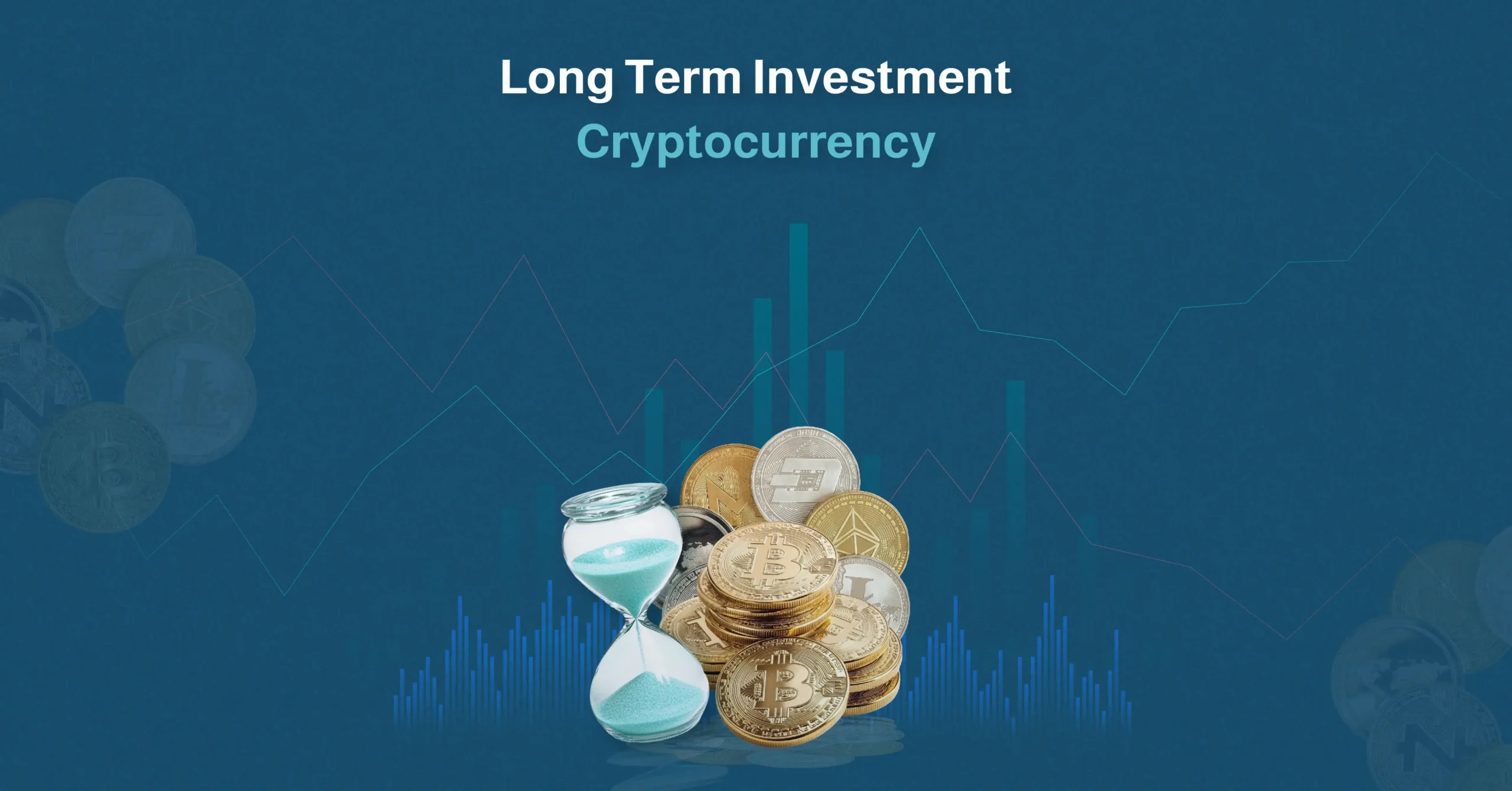In 2009, we saw the first black president in the white house, we mourned the death of the pop icon Michael Jackson, and US Flight 1549 made an insane landing on the Hudson River. I think for our purposes, the most incredible thing to come out of 2009 was the first use of cryptocurrency. Today, crypto has come a long way from its internet forum and fringe tech community days. It is now recognised as a global asset class. Headlines are still focused on the short-term gains and dramatic price swings. More people have begun asking the question, “What if we just hold on?”
You can start investing now from the Gamma Asset Investment Platform
Why Consider long term investment cryptocurrency
When we talk about a long-term investment, we mean holding on to an asset for years, not just a few weeks. You wouldn’t be trading based on daily charts or for quick wins. The concept is to avoid emotional decisions and let the asset and the technology backing it time to mature and grow.
We have seen this approach pay off for Bitcoin, in 2013 it was worth under $100 and Ethereum launched at just $0.30 in 2015, if you compare that to the current trading price it shows the benefit of holding. Holding these assets long term has out performed many different traditional portfolios even with its volatility.
Long-term investment tends to be a little less stressful, as you are not watching the markets incessantly looking for the right time to buy and sell. You are not trading reactively to every dip and valley but rather trusting the long-term value of decentralized networks, adoption rates, and scarcity-based models like Bitcoin’s halving cycle. The halving cycle refers to a scheduled event in which the reward for mining new blocks is halved. This occurs every 210,000 blocks for every four years to ensure that the market is not flooded, which will drop the value of the coins.
Building a Strategy for Long-Term Investment in Cryptocurrency
A long game in investing is not about luck but rather consistency and exploring passive income options. A popular strategy is Dollar-Cost Averaging (DCA), which involves investing a fixed amount at regular intervals, which could be monthly. This process is good for evening out volatility and removing the emotion from the process.
A new approach has been offered through some Crypto wallet platforms, staking. Platforms like Luno offer their users the option to stake well-known currencies (ETH, ADA, SOL, NEAR, DOT, and ATOM), allowing users to earn interest weekly or bi-weekly directly into their wallets. Making staking accessible to even the most untech-savvy among us, and offering a way of earning while you hold. For investors seeking Sharia-compliant options, staking may not align with Islamic financial principles, as returns can resemble interest. It would be best to consult a qualified advisor or choose an alternative with ethical standards.
Security needs to be a priority for long-term investment in cryptocurrency. This is done by using offline storage or cold wallets, the user would need to enable two-factor authentication, or choose a trusted custodial service, especially while staking through platforms like Luno, which vet there validators carefully.
It is important that you have a clear understanding of your goals and your time horizon. Are you investing for your retirement or an large purchase coming up in the near future, holding typically means you are holding onto your crypto for the next 3 to 5 years. This clear timeline will help you whether the market up’s and downs.
We would like to advise you don’t become hyperfixated or obsessed with charts. Track major blockchain developments, but focus on holding over time and trust your strategy, let it work for you.
Selecting the Right Cryptocurrencies for Long-Term Investment
You have decided that holding is an investment strategy you would like to try; now your next question is which one of the seemingly endless options is right for you? It is important to realize that not all cryptocurrencies are created equal and are designed to withstand holding. Many rise quickly on hype and fade away just as quickly. What should we be looking for when it comes to tokens that will stand the test of time?
A large proportion of long-term investors will start with the most well-known Bitcoin (BTC) and Ethereum (ETH). These are the market leaders for adoption, infrastructure, and developer activity. Bitcoin can be referred to as “digital gold”, while Ethereum powers an entire ecosystem of decentralized applications. Both of which are considered to be the backbone of the crypto market and have found a place in long-term investing.
Other coins which have been considered for long-term investments include the high-potential altcoins from projects like Polygon (MATIC), Solana (SOL), or Chainlink (LINK), each of which will offer distinct use cases and technologies. It is up to you as an investor to do your homework, look into the project’s purpose, community support, development activity, and long-term vision. We would advise you to avoid any project that relies solely on influencer promotion or unrealistic returns.
As an investor, you should also consider liquidity and exchange access. Ensure that you choose assets that are supported by regulated platforms and work toward achieving your investment objectives; this should give you confidence in your long-term strategy. While building your portfolio, take care to balance your mix of established assets while cautiously selecting emerging projects; this is the difference in successful long-term investment in cryptocurrency.
Risk and Rewards of Long-Term Investment in Cryptocurrency
As the US president Thomas Jefferson was believed to have once said, “With great risk comes great reward.” While this is true with most things, the same can be said for investing in cryptocurrency, although we could rather say that where there is reward, there is likely to be some risk. We are going to have a look a the trade-offs investors need to be aware of.
| Risk | Reward |
| High volatility: Prices can swing sharply in short periods, testing investors’ confidence. | High growth potential: Historical returns have outpaced many traditional assets over time. |
| Regulatory uncertainty: Rules vary between countries and may change over time. | Early adoption advantage: Investors gain exposure to an emerging, still-evolving asset class. |
| Security risks: Wallet hacks, phishing scams, or loss of access can lead to financial loss. | True ownership and control: Secure wallets offer full control over your assets, unlike banks or brokers. |
| Market immaturity: Some projects fail due to poor planning, hype, or lack of real utility. | Innovation and utility: Strong projects introduce new tech and global cases, from DeFi to smart contracts. |
| Emotional pressure: Fear and hype can lead to bad timing and impulsive decisions. | Long-term discipline pays off: Staying the course often leads to outsized gains compared to panic selling. |
Even with its risks, many investors see long-term investing in cryptocurrency as a forward-thinking strategy. While we cannot eliminate risk altogether, we can manage it with diversification, strong security practices, and platforms that prioritise transparency and trust.
Long-term investment in Cryptocurrency vs. Traditional Assets
When deciding where to allocate your capital, a fair comparison is vital. Cryptocurrency has a very different risk profile when compared with more traditional options like sukuk, equities, and real estate, which will give long-term investors better context, especially those with specific compliance needs or goals.
Sukuk is favoured in Islamic finance as it is backed by tangible assets and is structured to be Sharia-compliant. They offer reliable, low-risk returns but are fairly conservative in their growth potential.
Equities will provide ownership in companies and provide the investor with dividends and capital appreciation. There is nothing new here; long-term investors have been investing in equities for as long as investing has been a financial option. This is because they are well-regulated, especially in developed markets. But access to global equity markets isn’t always straightforward, and returns can be based on broader economic cycles.
Real estate is still one of the most popular methods of long-term investing, appreciated for its stability and tangible value. However, there are downsides, including high capital requirements, a lack of liquidity, and slower returns, which can be a deterrent for smaller investors.
Now, if we compare that to the long-term investment in cryptocurrency. Digital assets offer investors global accessibility, low barriers to entry, and quick, easy liquidity. It allows direct ownership without intermediaries. All of this comes at a price, though, the higher volatility and the possibility of raising compliance concerns for faith-based investors, particularly when it comes to staking, lending, or earning interest.
Enter Gamma Assets, a unique bridge between traditional and modern investing. The platform gives investors access to the blockchain space by purchasing tokenized real estate. This combines the stability of property with the transparency of blockchain. Starting your investment journey with as little as 500 SAR, access detailed records via smart contracts, and grow your portfolio with full visibility. Investors in the GCC or Islamic finance markets, Gamma Assets structure aligns more closely with local expectations, while still tapping into digital innovation.
Long-term investment in cryptocurrency can be rewarding, but it needs to be approached with care, strategy, and an understanding of the landscape. Crypto offers unique possibilities, whether you want to complement traditional assets or explore emerging markets.
By choosing the right assets, managing your risk, and considering platforms like Gamma Assets, you can position yourself to grow confidently over time, following your goals and values at each step.
More topics can be read on the Gamma blog
FAQ
Is crypto (e.g., Bitcoin, Ethereum) legally tradable in Saudi Arabia?
Yes. While cryptocurrency is not officially recognised as legal tender, trading it is allowed within certain regulatory parameters. The Saudi Central Bank and CApital Market Autority are monitoring developments, and investors are advised to use platforms that are safe and comply with local law.
Which exchanges (e.g., Binance) are accessible, and what are the regulatory frameworks?
Exchanges like Binance, BitOasis, and Rain are accessible in the region. Investors must comply with Know Your Customer (KYC) and Anti-Money Laundering (AML) requirements. Regulatory frameworks are evolving, with emphasis on investor protection and finacial integrity.
How do long-term crypto investments compare to sukuk or equity?
Sukuk offer stability and compliance. Equities provide dividend income and growth. Long-term investment in cryptocurrency brings higher volatility, but also higher growth potential and 24/7 liquidity, which compliments rather than replaces traditional asset classes.













